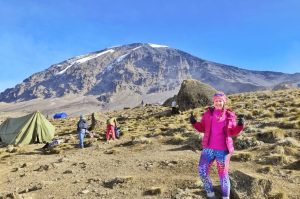Understanding the Weather Patterns in Ruaha National Park
Ruaha National Park, located in Tanzania, is a diverse and stunning destination known for its rich wildlife and breathtaking landscapes. One important aspect to consider when planning a visit to Ruaha National Park is the weather patterns that prevail in the region. Understanding the climate and weather conditions can greatly enhance the overall safari experience and ensure a comfortable and enjoyable trip.
Weather Patterns in Ruaha National Park
Ruaha National Park experiences a typical tropical climate, characterized by distinct wet and dry seasons. The wet season typically occurs from November to April, with the peak of rainfall in March and April. During this time, the park is lush and green, with plenty of water sources that attract a variety of wildlife. The temperatures are usually warm, ranging from 20°C to 30°C, making it a pleasant time to visit for those who enjoy the vibrant colors of the bush and the chance to see newborn animals.
On the other hand, the dry season in Ruaha National Park usually spans from May to October. This period is marked by low rainfall and a decrease in vegetation, making it easier to spot wildlife as they congregate around water sources. The temperatures can vary significantly during this time, with daytime temperatures often exceeding 30°C, while nighttime temperatures can drop as low as 10°C. The dry season is considered ideal for wildlife viewing, as animals are forced to gather around the remaining water sources, providing excellent opportunities for safari sightings.
Factors Influencing Climate in the Region
Several factors influence the climate in Ruaha National Park, including its geographical location and topography. The park is situated in a transition zone between the savannah plains of East Africa and the miombo woodlands of Southern Africa, resulting in a diverse range of habitats that support a wide array of wildlife species.
The park’s proximity to the equator also plays a significant role in shaping its climate. The equatorial location means that Ruaha National Park receives consistent levels of sunlight throughout the year, leading to relatively stable temperatures and consistent day lengths. The park’s altitude, which ranges from 500 to 1,900 meters above sea level, also contributes to its climate variability, with higher elevations experiencing cooler temperatures compared to lower-lying areas.
In addition to these natural factors, human activities such as deforestation and climate change can also impact the weather patterns in Ruaha National Park. Conservation efforts and sustainable tourism practices are essential in preserving the park’s delicate ecosystem and ensuring a healthy and balanced environment for both wildlife and visitors.
In conclusion, understanding the weather patterns in Ruaha National Park is crucial for planning a successful safari experience. By considering the seasonal variations and factors influencing the climate in the region, visitors can make informed decisions and prepare accordingly for their trip. For an unforgettable safari experience in Ruaha National Park, book your tour with Sunset Africa Safari today by contacting info@sunsetafricasafari.com.


